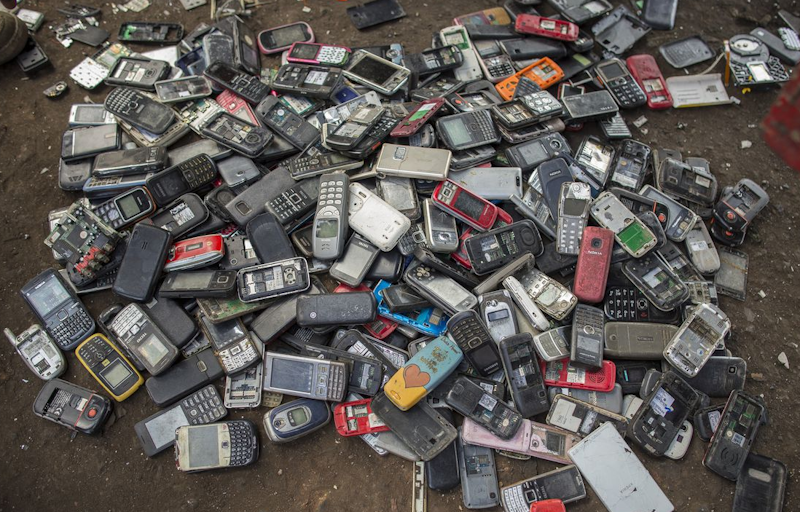
Smartphone recycling is progressing, but can do better
Under pressure due to its heavy environmental impact, the smartphone market has pledged to increase its recycling and refurbishment efforts. Where is the sector and what are its prospects?
Where is the sector
After a sluggish start in the early 2010s, the sector has experienced a marked acceleration in recent years, both in terms of reconditioning (repairing used devices) and recycling components (metals, rare earths, plastics, etc.). US waste management is lacking behind when it comes to electronics recycling.
According to Persistence Market Research, 11% of devices sold worldwide are refurbished items. A rate lower than that of other electronic products, but nevertheless increasing, thanks to the progress made in terms of collection and repair, underlines this firm. More and more players are setting up recycling programs, due to regulatory pressure and consumer pressure.
We are still on low rates, but it is starting to take off. For environmental associations, progress remains insufficient. Only 20% of electronic waste is recycled, according to the Catalan NGO Setem, which organizes a mobile social congress parallel to the MWC. We could do a lot more in term of recycling and waste management for smart phones.
What are the recycling actors
A multitude of companies have emerged in recent years in the recycling niche, such as the resale site Back Market, the manufacturer of ethical telephones Fairphone, or Recommerce, a company specializing in second-hand devices.
A sign that the market is buoyant: the smartphone giants themselves have started reconditioning. Apple and Samsung have thus promised to increase the share of recycled materials in their devices and now have their own recycling channels. The ability to recycle smartphones has become an important issue for all manufacturers, but also for operators.
There are questions of images that are at stake, everyone tries to differentiate themselves. In Barcelona, the British group Vodafone has announced a partnership with Recommerce to promote the recovery of old devices. The French Orange had committed itself last year to increase from 2% to 10% the share of refurbished phones sold in its shops. US waste management laws should be inmplemented to take into account smartphones recycling.
What are its prospects for recycling
According to junk disposal and recycling experts, the sector should see strong growth, driven by the growing appetite of consumers for green products and by the slowdown in innovation in the smartphone market, which makes second-hand products more attractive.
According to the research firm Mordor Intelligence, the refurbished smartphone market should grow by 10% per year by 2027, with a notable breakthrough in the Asian market – particularly in India and Indonesia. An analysis shared by Persistence Market Research, which expects to see the turnover of recycled laptops jump over the next ten years, from 49.9 billion dollars in 2020 to 143 billion dollars in 2031.
Are there still brakes
Even if the outlook is positive, several obstacles still weigh on the sector, including technical ones related to waste collection. For recycling to be effective, you need a heavy waste management organization. But the main obstacles are cultural. More and more refurbished phones are sold with warranties. But there is still apprehension among consumers, who have doubts about the performance of the product.
The business practices of manufacturers and operators themselves do not always favor reconditioning. There is a culture consisting of constantly bombarding consumers with new offers and innovations, in order to push them to change” their devices.
A paradoxical strategy in view of the environmental message relayed by the giants in the sector. If you are really concerned about the planet, you have to bet on the sustainability of the product. However, this goes against the dominant economic model, based on a regular renewal of devices, often subsidized by the operators.
The cost of renting a dumpster in Ohio
In Ohio cities such as Akron, some people rent a dumpster so that they can collect smartphones and send them to the nearest recycling facility, all in one go. But how much does it cost to rent such a container?
The cost of renting a dumpster in Ohio can vary significantly depending on several factors, including the location within the state, the size of the dumpster, the duration of the rental, the type of waste you need to dispose of, and the specific dumpster rental company you choose.
In Akron, Ohio, as in most places near Cleveland, dumpsters come in various sizes, typically ranging from 10 to 40 cubic yards. Smaller dumpsters are more budget-friendly, with an average cost of around $200 to $500 for a one-week rental of a 10-yard container. These are suitable for small cleanout projects or minor renovations. Larger dumpsters, which are ideal for substantial construction projects or extensive cleanouts, can range from $500 to $1,000 or more for a week-long rental.
The type of waste you plan to dispose of can also impact the cost. Common household junk or construction debris is generally less expensive to dispose of than hazardous materials, electronics, or heavy materials like concrete and dirt.
Additional fees, such as permits, overage charges, or specific disposal requirements, can vary depending on the city or county regulations within Ohio. To get an accurate cost estimate, it’s advisable to contact local dumpster rental providers (check this website for more info), request quotes tailored to your project’s needs, and inquire about any potential extra costs. Comparing quotes from multiple companies can help you find the most cost-effective option for your specific situation. Prices can also fluctuate, so it’s wise to plan your rental well in advance to secure the best rates.

